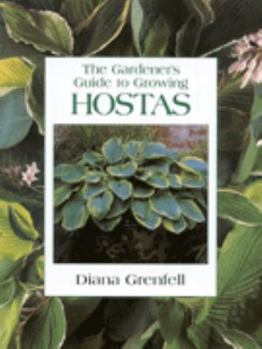Gardener's Guide to Growing Hostas
No Synopsis Available.
Format:Paperback
Language:English
ISBN:0715312774
ISBN13:9780715312773
Release Date:January 2001
Publisher:David & Charles
Length:160 Pages
Weight:1.00 lbs.
Customer Reviews
4 ratings
So Many Hostas So Little Planet
Published by Thriftbooks.com User , 24 years ago
Buy this for the plant list. It is easy to spend more than the book price on a modest bunch of Hostas at some garden center, or a lot more, if you are in a big hurry. Grenfell tells us more than those pretty tags do, and even says some of the things they are likely to neglect. I would wish that she had been more explicit about the range of what one is likely to get in the way of plant sizes as one tries to compare garden center, nursery, and catalog prices and outcomes. Hosta "August Moon," p. 99, for example, is a wonderful plant here, pretty much as described, but the late-season potful I got at a garden center in the late 1980's took more than five years to get there; "Large," from what had looked, "Miniature" to "Small" when I bought it. The author may wish to pretend that the people she wishes to address do not haunt the close-out tables at regional garden centers and discount retailers or catalog web sites, but those are places where good information can help you find the good stuff. Likewise for dividing the mature clumps of unlabeled Hostas in the garden of the old house my sister bought in 1998. (Yes! Those purple shoots are Hosta "Patriot," p. 130.) Grenfell grows her Hostas in England, where USDA Zone 6 is thought to be rugged and my Zone 5 is thought to be a howling Russian or alpine wilderness, so she misses out on the strengths that Dr. Rieth was able to deploy so effectively in the cold of Upper Penninsula Michigan, but the advice she gives on growing perfectly awesome Hostas,in Chapter Five, is worth paying attention to. Grenfell pulls in essays by other experts to cover some of the territory she is not entirely familiar with, but the coordination between the text she wrote and what they wrote is not as tight as I would wish. When Dr. Pollock addresses the H. plantaginea's need for heat and some sun on p.86, he does not contrast North American performance, where long hot summers bloom them right up into Zone 4, to the English performance that Grenfell reports as; unlikely to bloom most years because the growing season is so much cooler. Less careful readers might follow her advice to plant warm, and end up with plants that get frost bitten for coming up too early, and then fried in July and August, or even June. (Well, it is long and talky. Editing is ok, to be sure, but I do like to put some content in to support my assertions. It would have been helpful to have a word count utility pop up here or in the Perview version so I could get a better sense of how far I have gone here. Paragraphing would be nice too.)
This book covered all aspects of growing hosta.
Published by Thriftbooks.com User , 25 years ago
I read every book on hostas that I could find. When I read Grenfell's book I knew it was one I needed to own, and I purchased it. It covered ever aspect of growing hostas. Elemaniting a lot of bad hearsay advise. The information is consice and easy to read. The technical information is all there as well as information for novice gardners. There is a well written chapter on propagation that will help any gardener increase their number of plants. Its not just for professionals.
Excellent subject coverage without being too technical.
Published by Thriftbooks.com User , 25 years ago
Just the book I was looking for. After collecting and growing hostas for some years now, Diana Genfell's book zeroed in on the questions I still had. It's a perfect companion to Paul Aden's hosta book, but if I had to own just one--this book would be it.
A GARDENING MUST HAVE!
Published by Thriftbooks.com User , 26 years ago
I LIKE THIS BOOK. CLEARLY WRITTEN, VERY INFORMATIVE IN THE AREAS SHE CHOSE TO INCLUDE IN THE BOOK, BEAUTIFULLY ILLUSTRATED. CAN'T SAY ENOUGH GOOD ABOUT THE BOOK.






